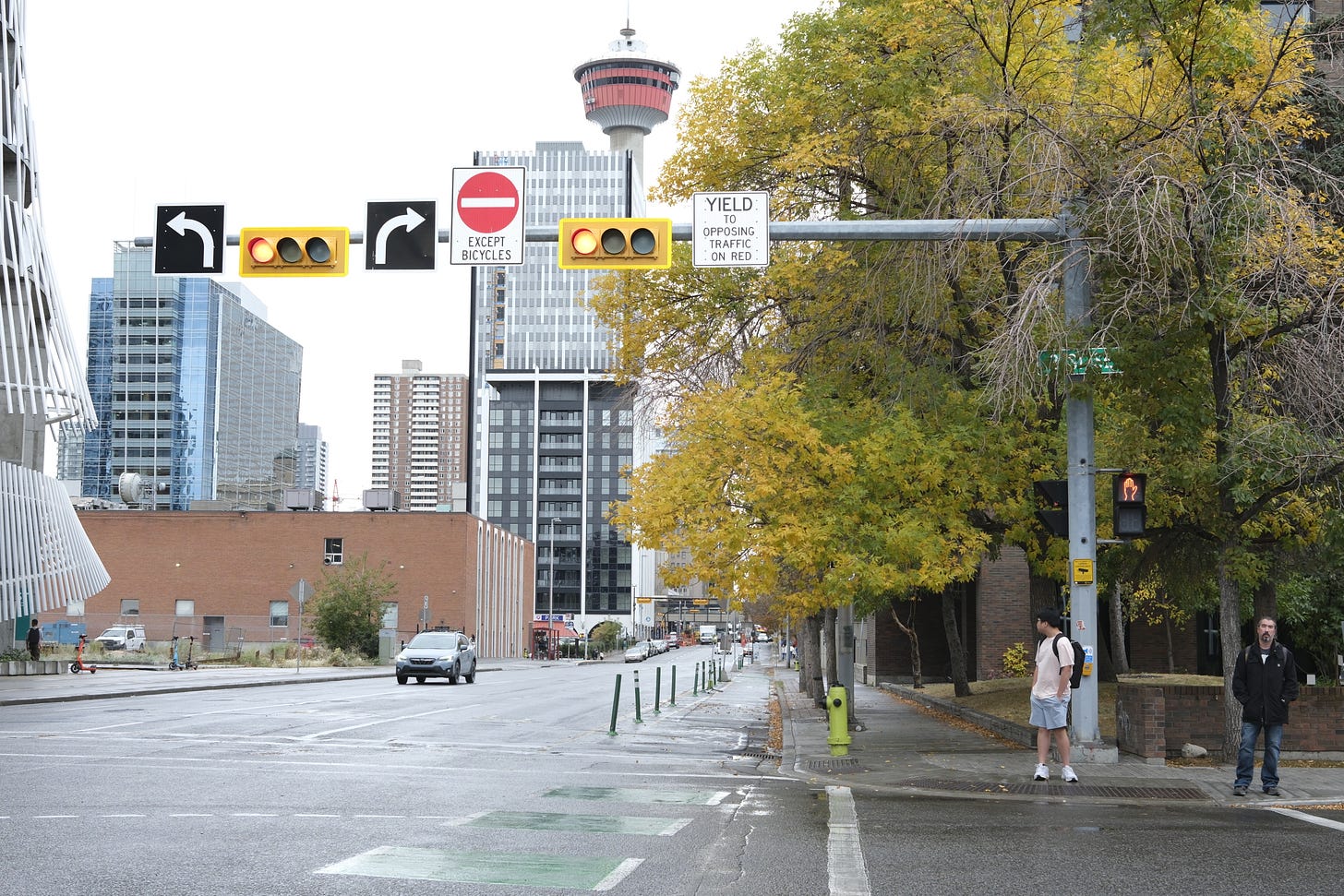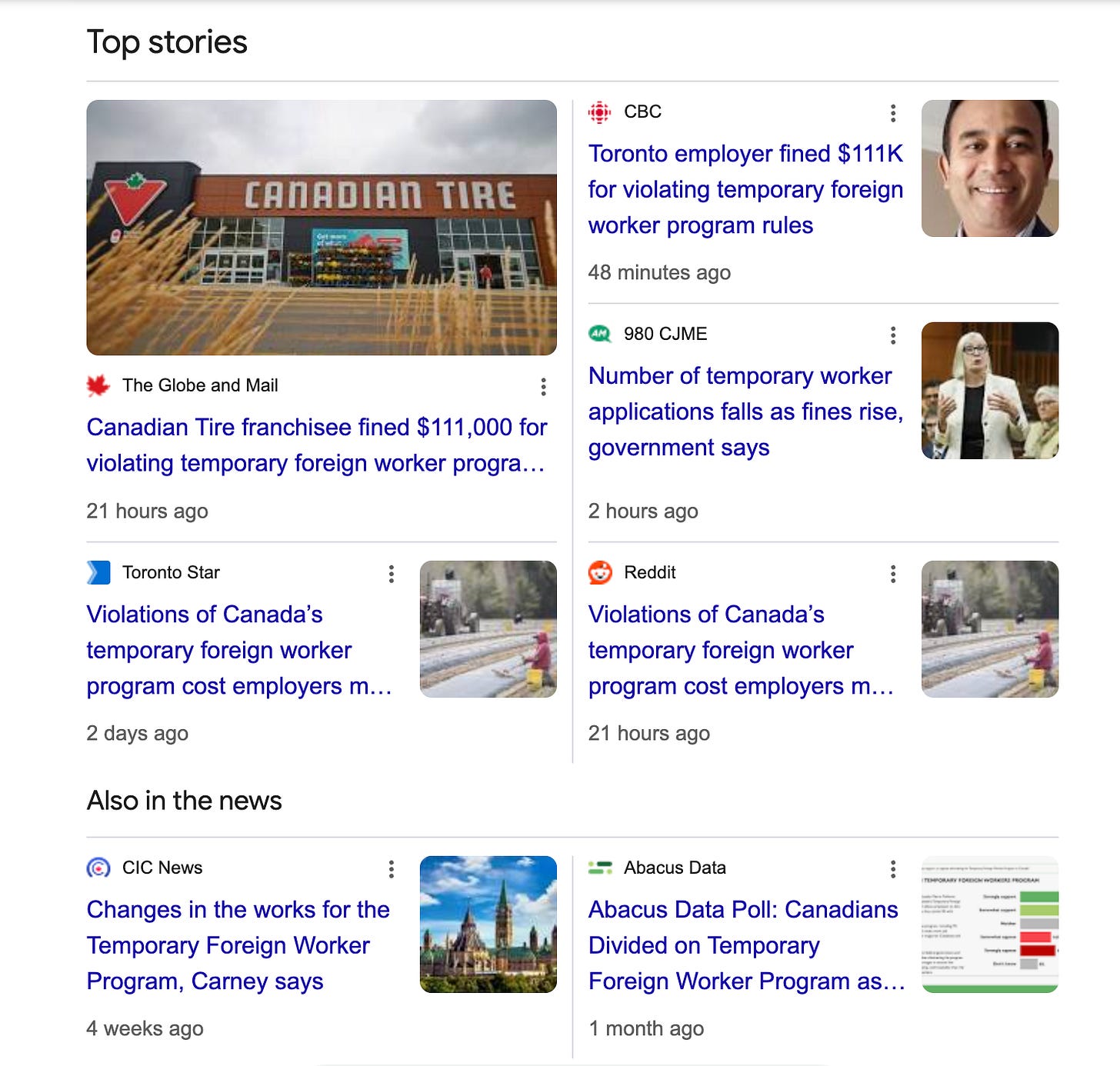Immigration Policy Alone Isn’t Going to Fix Canada’s Immigration Problems
We need bigger thinking, re-imagined cultural norms, and more of the slow, hard stuff.
Please forward this to ONE friend today and tell them to subscribe here.The technology writer,
has this interesting framework for describing problems caused by new technology; Class 1 and Class 2 problems. Class 1 problems are due to it not working perfectly. Class 2 problems are due to it working perfectly.For the sake of this piece, we are going to think of the Canadian immigration system as new technology. If you agree with me, then you would also agree that a major reason why everything seems so broken and confusing at the moment is because somehow, our immigration system is suffering from these two classes of problems at the same time.
Let’s start with what’s broken, because it’s spectacularly broken.
The Parts That Don’t Work
The processing time for the Start-Up Visa program, meant to attract entrepreneurs, is 53 months. It wouldn’t be a stretch to claim that by the time the approval arrives, the business idea is probably obsolete.
Spousal sponsorships are agonizingly long; applications from inside Canada can take as long as two years while those from outside Canada take about 15 months. Some economic immigration programs can take as long as 25 months.
These are Class 1 failures. Market forces could probably fix them with more resources, better technology, and improved processes. And then there’s the Temporary Foreign Worker (TFW) program. A Class 1 problem markets haven’t fixed because its dysfunction serves market interests. And in an interesting way contributes to our Class 2 problems.
However, there are other parts of our immigration system that work with remarkable efficiency.
The Parts That Work Too Well
The Express Entry program has become extraordinarily efficient at doing exactly what it was designed to do: sorting people by credentials and work experience and hitting numerical targets.
But this efficiency in combination with the TFW creates Class 2 problems for Canada. The system moves people through categories while remaining indifferent to whether they’ll integrate, find housing, or build actual lives in Canada. It treats immigration as a purely technical problem; grow our population, match workers to labor market needs. And it ignores everything that comes after.
A perfectly working system means we end up processing people faster than our society can absorb them.
For example, Canada’s population grew by 1.23 million between January 1, 2023, and January 1, 2024, almost entirely through immigration. More than double the pre-pandemic record. In 2024, it was still 951,517. Housing starts in 2024: 245,367 units.
This meant in 2023, Canada added 5.1 new residents for every new housing unit. In 2024, the ratio improved slightly to 3.9 new residents added per housing start. Still not enough.
We Have Some Big Questions to Answer Over The Next Decade
Our Class 1 problems can yield to entrepreneurial energy. We can throw resources at backlogs. We can redesign broken processes. We can regulate away the worst abuses of the TFW programs.
But we are still left with the Class 2 problems. Problems we’ve largely ignored in the whole immigration discourse.
Also, immigration policy won’t fix our Class 2 problems because as Kevin Kelly posits, “Class 2 problems require different fixes: re-imagined cultural norms, bigger thinking, social imagination, and in turn as a consensus forms, new legislation to codify these norms.”
Immigration policy moves at the speed of quarterly targets and political cycles. Cultural integration moves at the speed of generations. The binding agents of community take time —trust, shared norms, informal networks, mutual aid.
We need regulation that measures success beyond processing speed. One that tracks integration, housing stability, wage progression, and civic participation. We need cultural norms around mutual responsibility. What obligations do newcomers have to existing communities? What obligations do established Canadians have to newcomers?
We need new frameworks for belonging that go beyond legal status categories. Our current distinctions (citizen, permanent resident, temporary worker, refugee) are looking increasingly inadequate for the messy realities that come with being a multicultural society. More importantly, we need to start asking what sort of system we are trying to build. Not “does it work” but “what is it trying to accomplish?”
This is the hard, slow work of social and cultural imagination. It happens in communities, schools, BBQ parties, and late-night conversations. It’s slower than quarterly targets and election cycles. It demands that we look beyond treating immigration as a policy lever for economic growth and instead see it as part of the deeper project of building and maintaining a viable multi-ethnic democracy.
But I suspect it’s a good way to solve the problems created by an immigration system that is simultaneously broken and working at the same time.






Doz, while I really like the device of the Class 1 and 2 problem as a way to think about Canadian immigration, I’m hard pressed to think of any program in Canada that fits a Class 2 example.
I’m really not one to give into fatalism. I’m not. But whether it’s TFW or the study program, the level of dysfunction there is beyond comprehension.
To me, that makes it a layered problem. A Class 1 first and perhaps nested within it, a Class 2 problem?
What do you think?
This misalignment is creating needless tensions and only benefits big business at the expense of newcomers and locals. No one wants to travel across the world to be exploited, and no sane person wants to be hostile to new neighbours